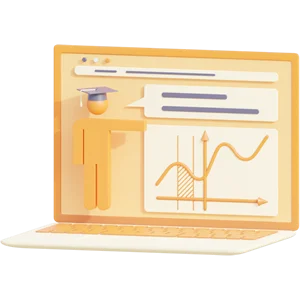BIOD 101 Module 4 Portage Learning Exam With Complete Solutions
BIOD 101 Module 4 Portage Learning Exam With
Complete Solutions
Chromosomes - structures of packaged chromatin complexes
Somatic cell - All of the body's cells except gametes
Number of chromosomes in each somatic cell - 46 (23 pairs)
Cell cycle - Process of parent cell replicating its genetic info and dividing
into 2 new daughter cells
cytokinesis - division of the cytoplasm
interphase - G1, S, G2 phases. 90% of cycle time.
Gap phase 1 - First phase, growth phase
Messenger RNA (mRNA) - transfers genetic info from DNA to ribosomes
site of protein synthesis - ribosomes
S phase - DNA duplication phase, lasts 10-12 hours
G2 phase - Second growth phase, when synthesis of organelles and proteins
needed for mitosis occurs. Lasts 4-6 hours.
centrosome - region that organizes microtubules for cell division
centriole - short cylindrical protein filaments made of tubulin. Plays role in
formation of mitotic spindle.
Chromatin fibers become more coiled and densely packed, sister
chromatids are joined at the centromere and have an X shape. -
Condensation stage of prophase
Cohesions - proteins holding sister chromatids together
Microtubules begin moving to opposite poles of cell - Centrosome movement
stage of prophase
aster - Radial microtubule proteins extending from each centrosome
Cytoskeletal apparatus composed of different types of microtubules to
separate sister chromatids. Includes centrosomes, spindle microtubules,
and asters - Mitotic spindle
Synthesizes ribosomal subunits, breaks down during prophase - Nucleolus
Characteristics of Prophase - 1. Condensation of chromatin fibers
2. Centrosome movement
3. Formation of mitotic spindle
4. Breakdown of nucleolus
Characteristics of Prometaphase - 1. Continued chromatin condensation
2. Changes to nuclear envelope
3. reorganization and changes to mitotic spindle
kinetochore - structured region used for microtubule attachment, face in
opposite directions
Characteristics of metaphase - 1. polarization of centrosomes
2. chromosome alignment along equatorial line of cell
3. kinetochore attachment
metaphase plate - symmetrical plane across cell formed by centrosome
placement
Characteristics of anaphase - 1. Separation of sister chromatids
2. movement of separated chromatids toward centrosome poles
3. elongation of cell
Characteristics of telophase - 1. reformation of nuclei, some organelles, and
nuceoli
2. decondensing of chromosomes
3. dissolution of spindle microtubules
4. mitotic phase completion
5. Cytokinesis
Cleavage - Process through which cytokinesis occurs in animal cells
Cleavage furrow - visible groove along metphase plate of cell. Actin and
myosin interact to contract actin ring like a drawstring and divide the cell
Cell cycle control system - molecular surveillance mechanisms that can halt
the cell cycle or allow it to proceed
Preview document (3 of 10 pages)
Knoowy benefits
$ 36.91
 Money back guarantee
Money back guarantee
 Documents can be downloaded immediately
Documents can be downloaded immediately
 $0.50 discount when paying with balance
$0.50 discount when paying with balance
-
 Receive free quiz questions with document
Receive free quiz questions with document

Specifications
- School: Walden University
- Course: NURSING
Document
- Section: Examinations
- Made on: 05-15-2024
- Type: .pdf
- Pages: 10
- Language: English
Tags
Seller
Earn from your summaries?
Subjects of NURSING - Walden University
More NURSING ›advanced pathophysiology advanced pharmacology ahip final ati exit ati exit exam 2024 version comprehensive retake test ati rn fundamentals ati rn maternal newborn proctored computer science computer studies education emt midterm exam fisdap trauma fundamentals of nursing health care health care/ nursing health care/ nursing/pediatrics hesi a2 hesi exit hesi rn exit exam mathematics medical-surgical nursing nursing pharmacology phtls post test 9th edition psychotherapy with multiple modalities
 Deal: get 10% off when you purchase 3 or more items!
Deal: get 10% off when you purchase 3 or more items!
Deal: get 10% off when you purchase 3 or more items!









